Every grower has their own wish list when it comes to techniques, but almost everyone is open for mechanization. Less work carried out by people is interesting from both a cost and hygiene perspective. Light4Food established their machine division in 2018 to realize complete machine lines for the processes around the cultivation of lettuce, herbs and cresses around the world. The cultivation system of using ‘floaters’ is completely mechanized by this.

Basil on floaters (left) and several baby leaf lettuce sorts on floaters (right)
In the meantime, the complete mechanized cultivation systems are up and running in domestic and foreign locations. The biggest challenge is the flow of floaters into the different machines. The capacity has to be good. “You don’t want any hold-ups in the floater flow”, says Niels Jacobs. “The flow needs to keep going to be the most efficient. At this stage, we are reaching flow rates of 600 floaters per hour.” This is the main reason for building the complete lines themselves. “Working with several machine suppliers for one process will cause hold-ups in the floater flow. That’s why we take care of the process from seed to harvest and wash off the floaters to reuse them.”
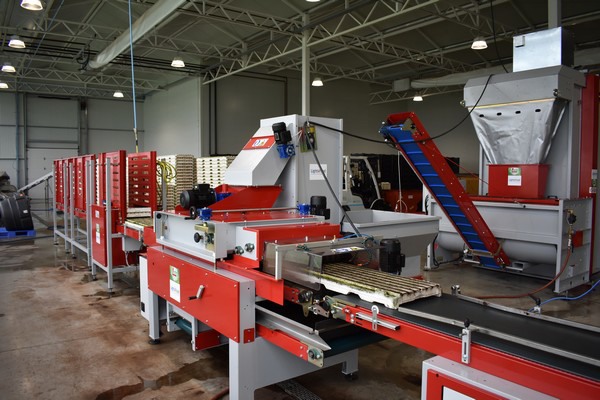
Filling and seeding line
28 meters
Some projects are already up to 4 hectares. “This is the maximum surface to cover with just one machine line. At this moment, 4 hectares of cultivation on floaters is already quite a bit”, says Rene van Haeff. “To cover bigger surfaces, two machine lines are necessary which is also profitable for ensuring continuity. When changing crops, the changeover time to adjust the machine to the crop is tackled by placing two machine lines."
The longest machine line that Light4Food has built is 28 meters long. The length of the line is not the challenge, Rene van Haeff notes. “The growing ponds are much longer, sometimes up to 100 to 150 meters.”
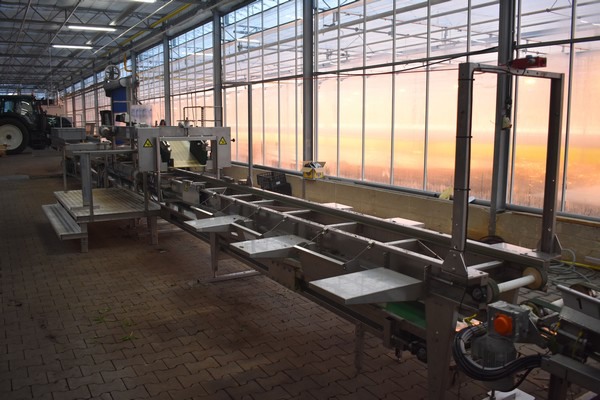
Harvesting line for babyleaf and work spaces for head lettuce harvest
American standards
The floaters that are placed on the ponds are 40 to 120 centimeters (15.75 inch to 47.24 inch). Several crops can be grown on this, with Light4Food defining babyleaf and teenleaf products as lettuce, herbs and cresses as a product group. The system is not limited to these crops, it can also be used for head crops like lettuce and bok choy. “The system is the same, with some little adjustments. This is smoothly adjusted because the machines are built modular”, says Niels.
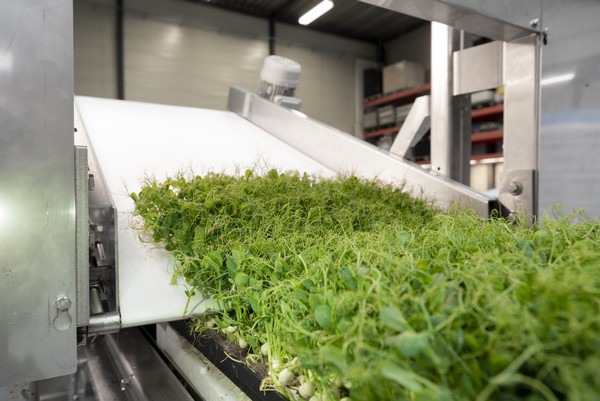
Harvesting of pea shoots
Several lines are already up and running in the Netherlands and Germany, but also in the USA. This country is focused on food safety and Light4Food responds to this. “During the engineering and building we keep food safety in mind. The machines need to cope with being washed and disinfected every single day. One can say that our machines are built up to American standards.”
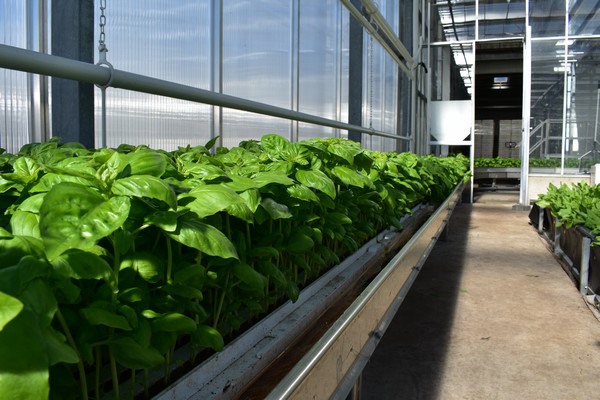
Basil on transport gutter
Mobile system
Smaller acreage growers could ask themselves, would this system also be possible and viable for me? “Yes”, ensures Rene van Haeff, “we have developed mobile machines, a simple harvester in fact. Specifically developed for small acreage growers who want to start with a cultivation up to a few hundred square meters up to a maximum of half a hectare. For these growers, labor costs are the biggest costs."
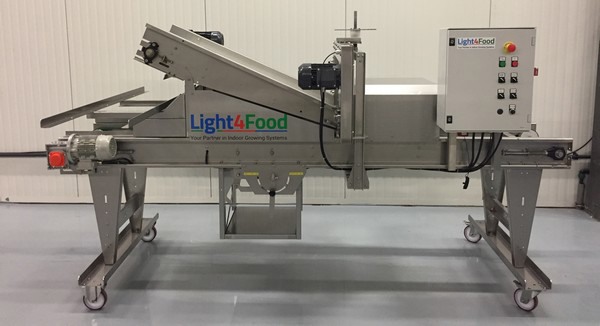
Mobile harvesting machine
Complete projects
Light4Food was already delivering LED lighting systems and water treatment for the hydroponic cultivation system, which recently expanded with a partnership with Moleaer. These expertises combined with the machine division enable the company to provide the complete technical side of hydroponic cultivation systems. Advice for the use of the system and in how to grow with this system is provided by Light4Food’s Plant Specialists. In addition, the Plant Specialists conduct research in the Indoor GrowHow Facilities. Thus, problems occurring during cultivation are researched here and solutions are provided to the customers. With that, new developments and results are exchanged with the client. “That’s how we stay in the forefront of hydroponic cultivation systems, sharing knowledge with our clients to enable growing food worldwide”, says Rene van Haeff.

One of the facilities at the Indoor GrowHow Facilities
For more information: Light4Food
Light4Food
Expeditiestraat 11
5961 PX Horst
Netherlands
+31 77 207 0008
[email protected]
www.light4food.com
